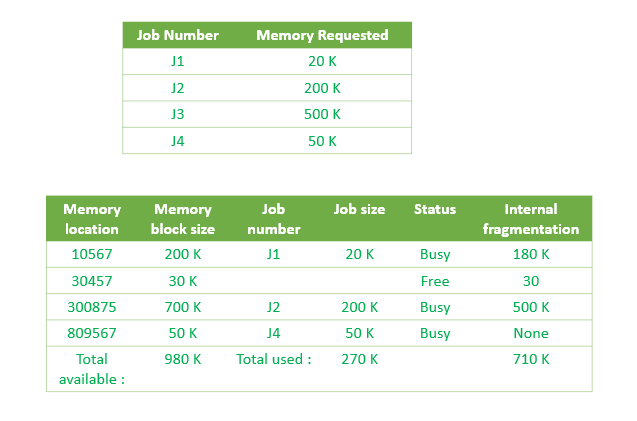
First-Fit Allocation Explained: How it Works in Operating Systems (and Why You Should Care)
Are you diving into operating systems and memory management? Understanding First-Fit allocation is crucial. This article provides a clear and concise explanation of this memory allocation technique, its benefits, and drawbacks. Let's explore how First-Fit works and whether it's the right choice for your system.
What is First-Fit Allocation? A Simple Definition.
First-Fit allocation is a straightforward memory management technique used by operating systems. When a process requests memory, the OS searches the list of free memory blocks, starting from the beginning. It allocates the first block that's large enough to satisfy the request, splitting the block if necessary.
This approach contrasts with other methods like Best-Fit and Worst-Fit, making it a fundamentally different way to handle memory requests. So, why is it important? Keep reading.
How First-Fit Allocation Works: A Step-by-Step Look
Imagine your computer's memory as a series of compartments, some full (allocated) and some empty (free). When a program needs space, First-Fit does the following:
- Starts at the beginning: The operating system begins its search at the very first memory block.
- Checks for sufficient size: It compares the size of each free block to the amount of memory requested by the program.
- Allocates the first suitable block: As soon as it finds a free block that's big enough, it allocates the necessary portion to the program.
- Splits if necessary: If the free block is larger than the request, it's split into two: one part allocated to the process, and the remainder stays as a free block.

In the illustration above, Job 1 (J1) is assigned the nearest suitable partition in memory. Notice that this approach might leave smaller jobs, like J3, waiting even when there might be enough combined free space elsewhere.
The Advantages of First-Fit: Why It's Still Used
Despite its simplicity, First-Fit offers several advantages:
- Easy to implement: The algorithm is extremely simple, making it easy to code and integrate into an operating system.
- Fast allocation: Finding the first suitable block is generally quick, leading to faster memory allocation times.
- Reduces fragmentation (sometimes): By allocating from the beginning, it can sometimes lead to larger contiguous free blocks later on.
These advantages make First-Fit a viable option particularly when speed and ease of implementation are priorities.
The Disadvantages of First-Fit: Where It Falls Short
First-Fit isn't perfect. It also has drawbacks:
- External Fragmentation: Over time leads to many small, unusable free blocks scattered throughout memory.
- Doesn't optimize memory use: It doesn't consider the size of the request relative to the block, which can waste memory.
- Can lead to inefficient searches: If smaller blocks are all at the beginning of memory, larger requests will require longer search times.
These disadvantages particularly affect systems with dynamic memory needs and processes that have varying memory requirements.
First-Fit vs. Other Allocation Methods: A Quick Comparison
First-Fit is just one of several memory allocation techniques. Here's how it compares to others:
- Best-Fit: Allocates the smallest block that's large enough. Aims to reduce fragmentation better than First-Fit but requires more searching, therefore time.
- Worst-Fit: Allocates the largest block available. Tries to leave larger free blocks, but often leads to smaller, unusable fragments and also requires more time because of searching..
- Next-Fit: Similar to First-Fit, but starts searching from the last allocated block. Can be slightly faster but may lead to more uneven memory usage.
Choosing between these methods depends on the specific needs and priorities of the operating system.
Real-World Applications of First-Fit Allocation
Despite its limitations, First-Fit allocation is still used in various scenarios:
- Simple operating systems: Due to its ease of implementation, it's suitable for resource-constrained environments.
- Systems with relatively stable memory requirements: Where processes don't frequently request or release memory.
- As a baseline for comparison: It serves as a simple benchmark when evaluating more complex allocation algorithms.
First-Fit provides a foundational understanding of memory management, upon which more advanced techniques are built.
Conclusion: Is First-Fit Right for You?
First-Fit allocation is a simple and efficient memory management technique. However, its susceptibility to fragmentation and inefficient memory utilization makes it unsuitable for all systems. Understanding its advantages and disadvantages, as well as how it compares to other methods, is essential for making informed decisions about memory management in operating systems.










